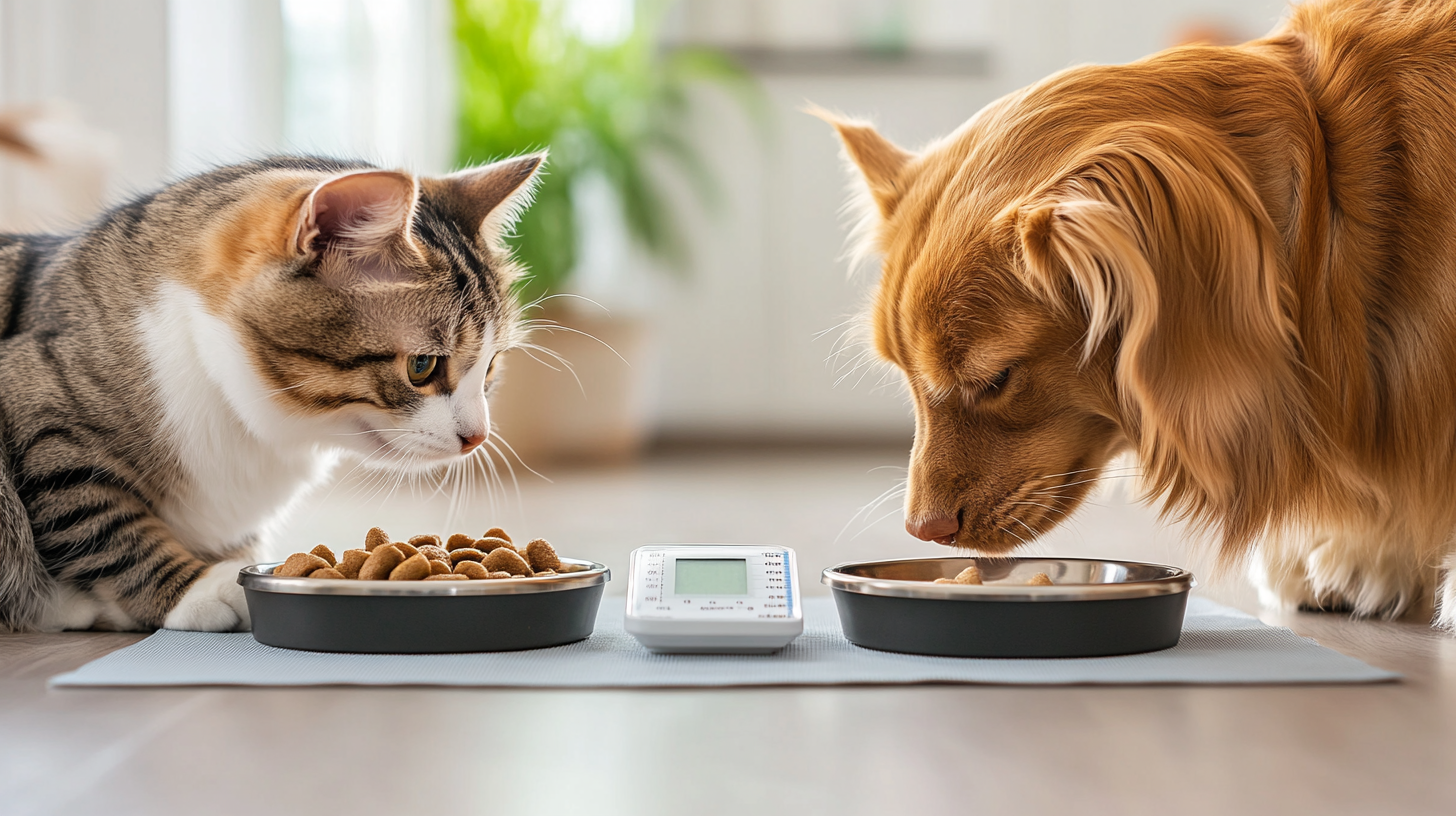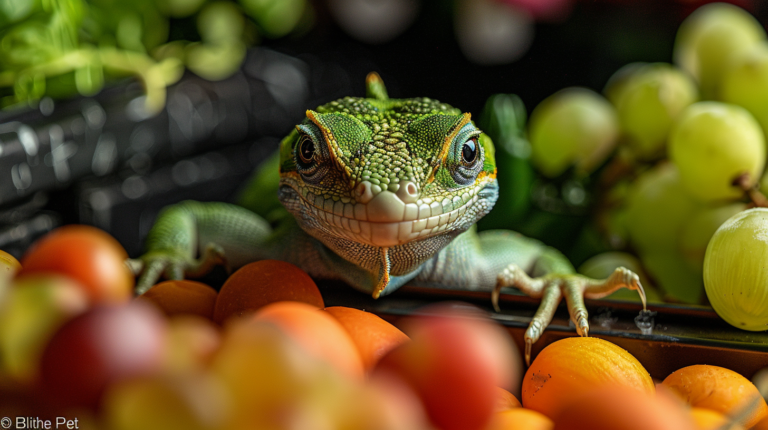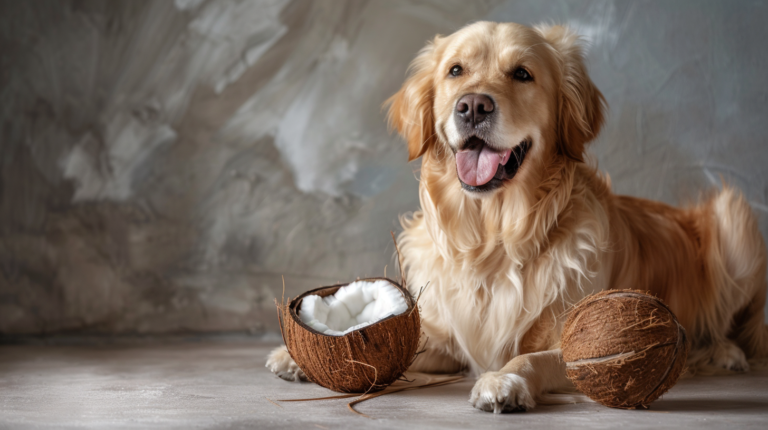Discover 5 essential pet portion control tips tailored to your pet’s size. Learn how proper feeding amounts prevent obesity and extend your pet’s healthy life span.
Table of Contents
The Ultimate Guide to Healthy Pet Feeding
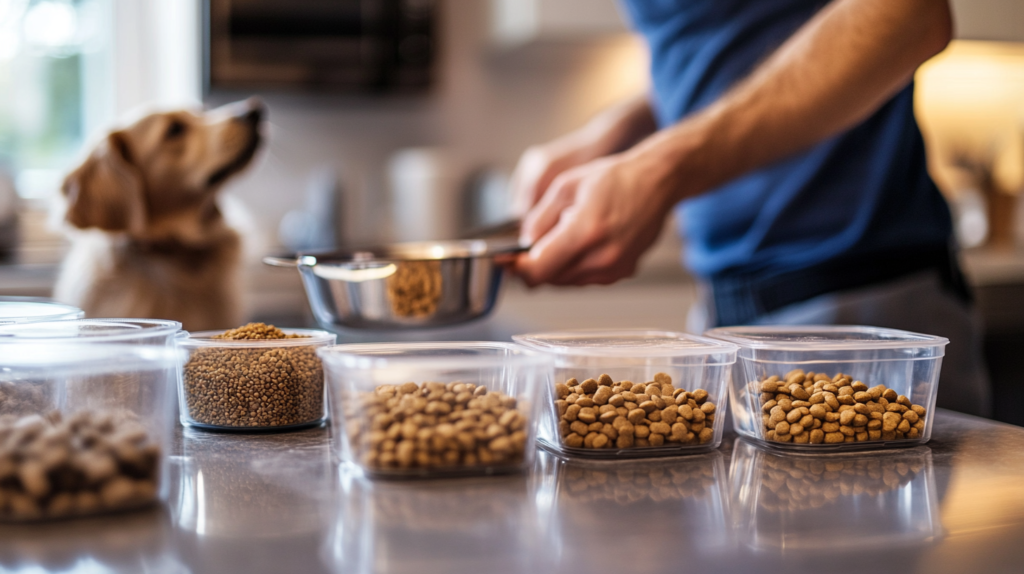
Is your pet maintaining a healthy weight? Proper pet portion control might be the missing piece in your furry friend’s wellness puzzle. With pet obesity rates climbing to alarming levels—affecting approximately 59% of dogs and 61% of cats in America according to the Association for Pet Obesity Prevention—understanding appropriate serving sizes has never been more critical for your pet’s longevity and quality of life.
In this comprehensive guide, we’ll explore evidence-based strategies for pet portion control that accommodate different sizes, ages, and activity levels. Whether you have a tiny Yorkie, a medium-sized retriever, or a giant Great Dane, you’ll discover practical tips that can be tailored to your specific pet’s needs.
Understanding the Pet Obesity Epidemic
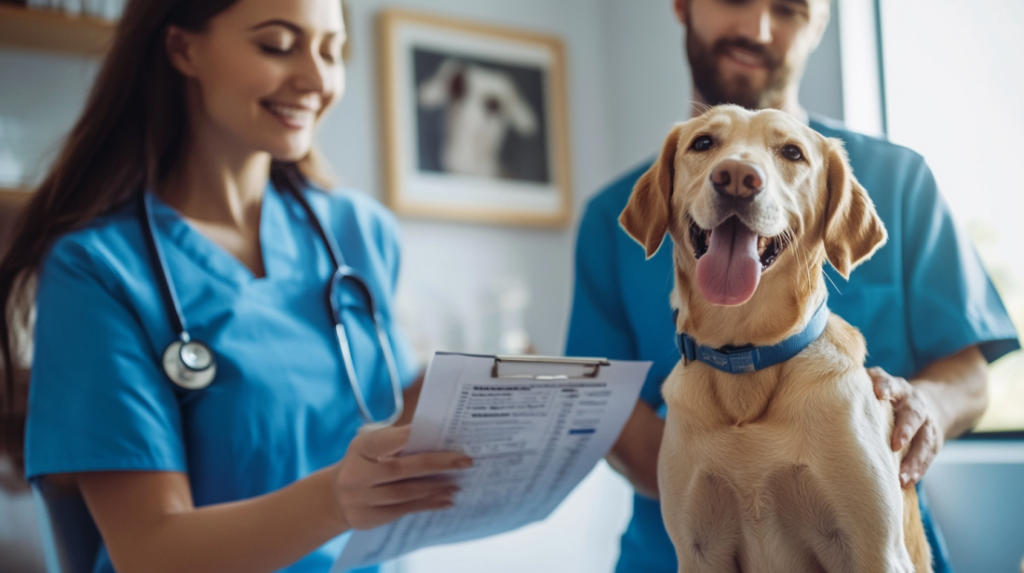
Before diving into portion control strategies, it’s important to understand why this issue has become so prevalent in our pet population.
The Scope of the Problem
The pet obesity crisis has reached epidemic proportions, with veterinarians reporting steady increases in overweight pets year after year. Dr. Ernie Ward, founder of the Association for Pet Obesity Prevention, describes the situation as “the most preventable health crisis affecting pets today.”
Research from the American Veterinary Medical Association indicates that overweight pets typically live 2-2.5 years less than their healthy-weight counterparts. This translates to a significant reduction in lifespan—approximately 15% for dogs and 20% for cats.
Common Causes of Pet Overweight Issues
Several factors contribute to portion control challenges:
- Misinterpreting feeding guidelines: Commercial pet food guidelines often provide ranges that may not be appropriate for individual pets
- Treat inflation: The calories from treats throughout the day can add up quickly
- Free-feeding practices: Leaving food out all day encourages overeating
- Misinterpretation of pet behavior: Confusing emotional needs with hunger cues
- Lack of measuring tools: Eyeballing portions instead of using standardized measuring cups
Signs Your Pet Needs Portion Control
Not sure if your pet needs help with portion management? Look for these indicators:
- Difficulty feeling ribs when pressing gently on their sides
- Absence of a visible waistline when viewed from above
- No abdominal tuck when viewed from the side
- Decreased energy levels or difficulty exercising
- Breathing difficulties or excessive panting with minimal activity
The Science Behind Proper Pet Portion Control
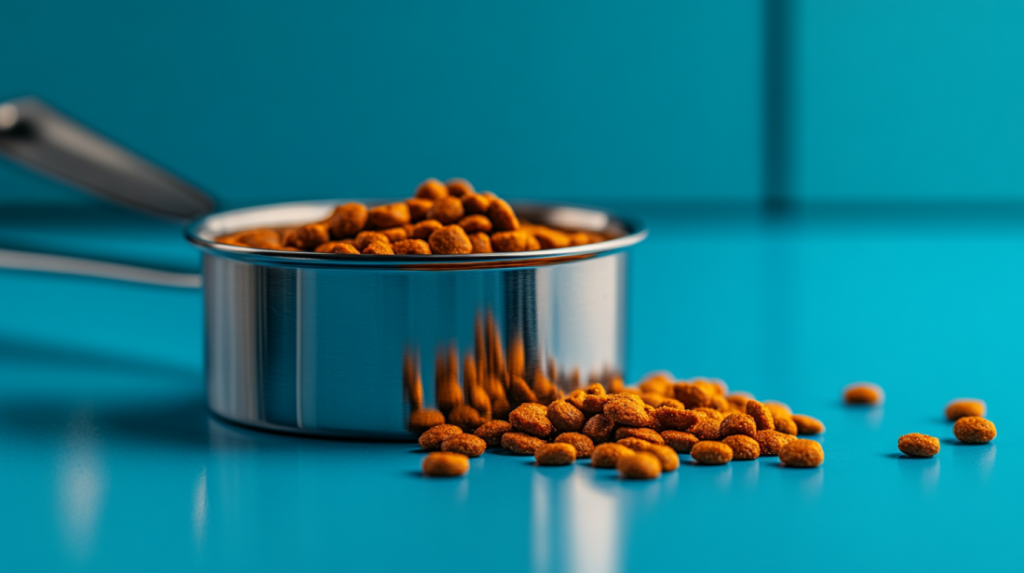
Understanding the science behind proper feeding helps reinforce the importance of appropriate portion sizes.
Metabolic Requirements by Size
Smaller animals have higher metabolic rates per pound than larger animals. This means that:
- Small pets (under 20 lbs) typically need more calories per pound of body weight
- Large dogs (over 60 lbs) require fewer calories per pound of body weight
- Body surface area, not just weight, affects metabolic needs
According to veterinary nutritionist Dr. Lisa Freeman of Tufts University, “A 10-pound cat needs proportionally more calories per pound than a 70-pound dog, despite being significantly smaller in size.”
Energy Expenditure Factors
Beyond size, several factors influence your pet’s energy needs:
- Neutered vs. intact: Neutered/spayed pets typically require 20-30% fewer calories
- Age: Senior pets generally need 20% fewer calories than adult pets
- Activity level: Working or highly active dogs may need 20-40% more calories
- Health conditions: Certain medical issues can affect metabolism substantially
Tip 1: Size-Specific Portion Control Strategies
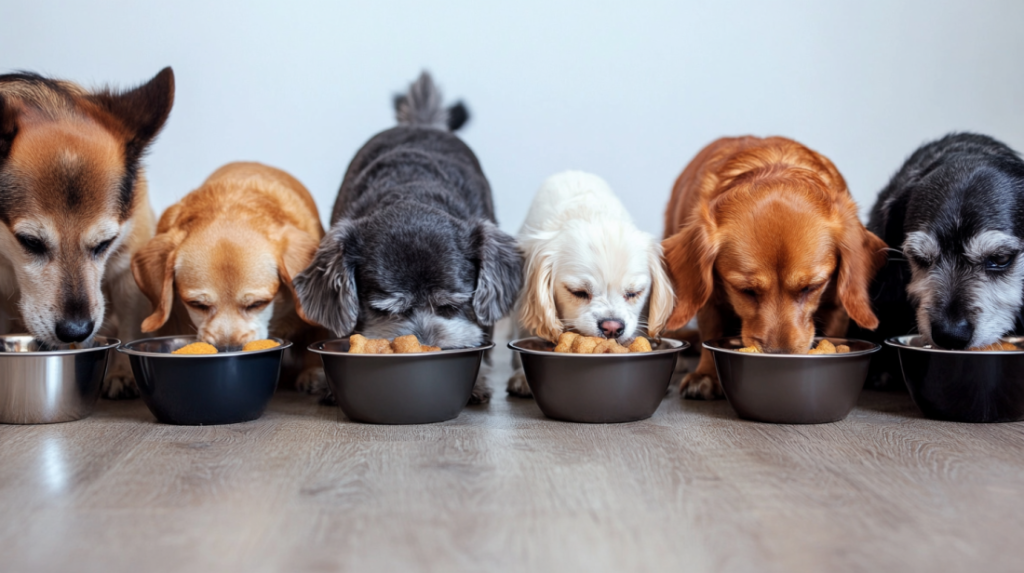
Different sized pets require distinctive approaches to portion control. Let’s break this down by size categories:
Small Pets (Under 20 lbs)
Small dogs and cats face unique challenges when it comes to portion control:
Measurement Precision Is Critical
With small pets, even tiny measurement errors can have significant impacts. A tablespoon excess for a 10-pound dog is equivalent to an entire extra meal for a 70-pound human!
Recommended Approach:
- Use kitchen scales (grams) rather than measuring cups for maximum accuracy
- Divide daily portions into at least two meals to help maintain stable blood sugar
- Account for treats in the daily calorie allocation (treats should not exceed 10% of daily caloric intake)
Practical Example: A healthy 10-pound adult cat typically needs about 200-250 calories daily. If your cat’s food contains 300 calories per cup, your cat needs only 2/3 to 3/4 cup TOTAL per day—often much less than what pet parents estimate.
Medium-Sized Pets (20-60 lbs)
Medium-sized dogs represent a diverse range of breeds with varied energy needs:
Activity Level Adjustments Are Essential
Medium dogs show tremendous variation in energy needs based on breed and activity level. A 40-pound border collie likely needs significantly more food than a 40-pound basset hound.
Recommended Approach:
- Adjust portions based on both weight AND activity level
- Monitor body condition score biweekly and adjust accordingly
- Consider feeding puzzle toys to slow consumption and increase activity
Practical Example: A 40-pound moderately active adult dog typically needs approximately 800-1000 calories daily. For a food with 350 calories per cup, this equals approximately 2.5 cups per day, divided into two meals.
Large and Giant Breeds (Over 60 lbs)
Larger dogs present unique portion control challenges:
Volume Management Is Key
Large dogs consume significant volumes of food, making portion control errors more likely. Additionally, their slower metabolism means excess calories have a greater impact.
Recommended Approach:
- Use standardized measuring cups rather than bowls or scoops
- Implement strict meal times rather than free-feeding
- Adjust portions seasonally (many large breeds need fewer calories in winter)
- Consider lower-calorie, higher-volume formulations for better satiety
Practical Example: A 90-pound moderately active adult dog typically needs approximately 1,600-1,800 calories daily. For a food with 350 calories per cup, this equals approximately 4.5-5 cups per day, ideally divided into two meals.
Tip 2: Use Proper Measuring Tools and Techniques
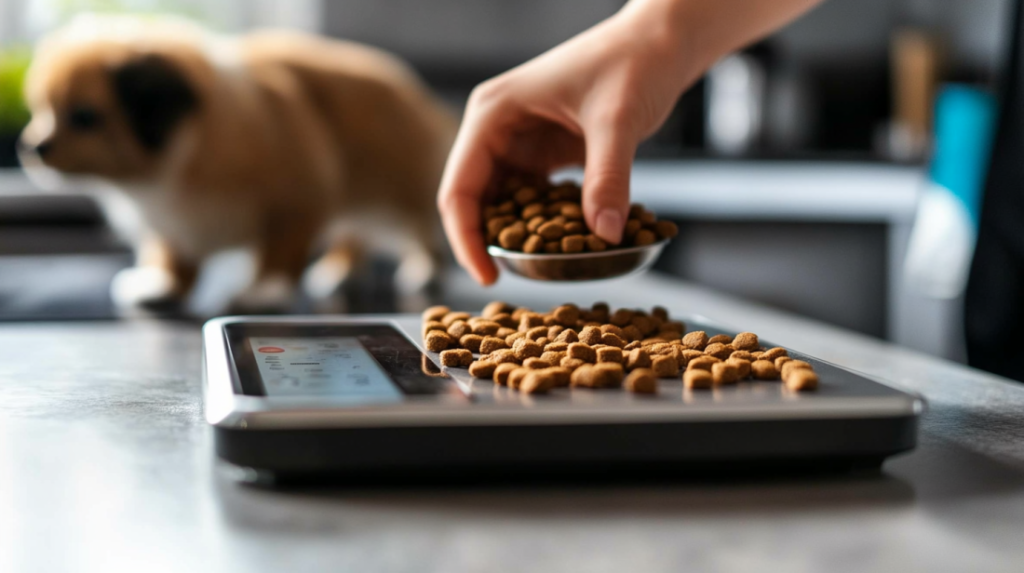
One of the most common causes of pet obesity is improper measurement of food portions. Here’s how to get it right:
The Problem with “Eyeballing”
A study in the Journal of Veterinary Medicine found that when pet owners “eyeball” portions, they overfeed by an average of 25%. Over time, this extra quarter cup adds up to significant weight gain.
Choosing the Right Measurement Tools
Digital Kitchen Scales
For maximum accuracy, especially for small pets, a digital kitchen scale is invaluable. Benefits include:
- Precise gram measurements eliminate variability
- Can measure wet and dry food consistently
- Eliminates the density variation problem with measuring cups
Standardized Measuring Cups
If using measuring cups, ensure they’re actual measuring cups rather than scoops or drinking cups:
- Use level scoops (not heaping)
- Replace bent or damaged measuring cups
- Consider transparent cups to ensure accuracy
Measurement Techniques That Make a Difference
The Level-Off Method
To ensure consistent measurement:
- Scoop food into the measuring cup
- Use a straight edge (like a butter knife) to level off the top
- Avoid tapping or packing down the food
Pre-Portioning for Convenience
For busy households or multiple caretakers:
- Measure out daily portions once per week
- Store in individual containers or bags
- Label with pet name and date
- Include specific serving instructions
Tip 3: Adjust Portions Based on Life Stage and Condition

Pet nutritional needs change dramatically throughout their lives, requiring ongoing portion adjustments.
Puppies and Kittens
Young animals have significantly higher caloric needs per pound than adults:
- Puppies typically need 2-3 times more calories per pound than adult dogs
- Kittens need approximately 2 times more calories per pound than adult cats
- Rapid growth periods require the most calories
Growth-Phase Adjustment Strategy:
- Weigh young pets weekly until 16 weeks of age
- Adjust portions every 2 weeks during growth phases
- Feed puppies under 6 months at least 3 times daily
- Feed kittens under 6 months at least 3-4 small meals daily
Adult Maintenance Stage
Once your pet reaches adulthood (typically 12-18 months for most dogs, 12 months for cats):
- Caloric needs decrease by 20-30% from peak growth phase
- Activity level becomes the primary determinant of caloric needs
- Metabolism begins to slow around 4-5 years of age
Adult Adjustment Strategy:
- Weigh your pet monthly
- Assess body condition score every 2-3 months
- Decrease portions by 10% if weight gain is observed
- Increase portions by 5% if weight loss exceeds recommendations
Senior Pets
As pets enter their senior years (generally 7+ years for large dogs, 10+ years for small dogs and cats):
- Metabolism slows by approximately 20%
- Protein needs often increase despite lower caloric requirements
- Activity levels typically decrease
Senior Adjustment Strategy:
- Reduce portions by approximately 10-20% from adult maintenance levels
- Monitor weight more frequently (every 2-3 weeks)
- Consider senior-specific formulas with adjusted calorie/nutrient profiles
- Divide daily portions into smaller, more frequent meals
Special Conditions Requiring Portion Adjustments
Pregnancy and Nursing
- Pregnant females need 25-50% more food during the last third of pregnancy
- Nursing mothers may need 2-4 times their normal food amount
- Gradual return to normal portions after weaning
Post-Surgery or Illness Recovery
- Recovering pets may temporarily need 10-30% more calories
- Protein requirements often increase during healing
- Work with your veterinarian for specific recommendations
Weight Management Programs For overweight pets, consult your veterinarian for a safe weight loss plan:
- Healthy weight loss should not exceed 1-2% of body weight per week
- Portion reduction should typically be 10-20% of maintenance calories
- Increased protein and fiber help maintain muscle mass and satiety
Tip 4: Implement a Structured Feeding Schedule

How you feed is almost as important as what and how much you feed. Structured feeding schedules support better portion control and healthier eating habits.
The Problem with Free-Feeding
Free-feeding (leaving food available all day) can lead to:
- Difficulty monitoring how much your pet actually consumes
- Overconsumption due to boredom or anxiety
- Food spoilage and potential safety issues
- Less predictable elimination schedules
According to a study in the Journal of Animal Physiology and Animal Nutrition, pets on meal-feeding schedules maintained healthier weights than free-fed counterparts.
Optimal Feeding Frequency by Size
Small Pets (Under 20 lbs)
- Adult small dogs: 2-3 meals daily
- Adult cats: 2-4 meals daily
- Toy breeds prone to hypoglycemia: May need 3-4 small meals
Medium-Sized Pets (20-60 lbs)
- Adults: 2 meals daily, ideally 12 hours apart
- Very active working dogs: May benefit from 3 smaller meals
Large and Giant Breeds (Over 60 lbs)
- Adults: 2 meals daily
- Deep-chested breeds: 2 meals daily is essential to reduce bloat risk
- Consider elevated feeding stations for better posture
Feeding Schedule Implementation Tips
Consistent Timing
- Feed at the same times each day
- Last meal should be 2-3 hours before bedtime
- Morning meal should be after initial bathroom break
Environment Matters
- Feed in a quiet, low-distraction environment
- Use non-slip bowls on non-slip surfaces
- Separate multiple pets during feeding times
Time-Limited Feeding
- Allow 15-20 minutes for meal consumption
- Remove any uneaten food after time limit
- Avoid offering alternatives if food is refused
Making the Transition If switching from free-feeding to scheduled feeding:
- Determine daily portion requirements
- Divide into appropriate number of meals
- Offer food at scheduled times, removing uneaten portions
- Expect an adjustment period of 1-2 weeks
- Remain consistent despite begging behavior
Tip 5: Adapt to Special Dietary Situations
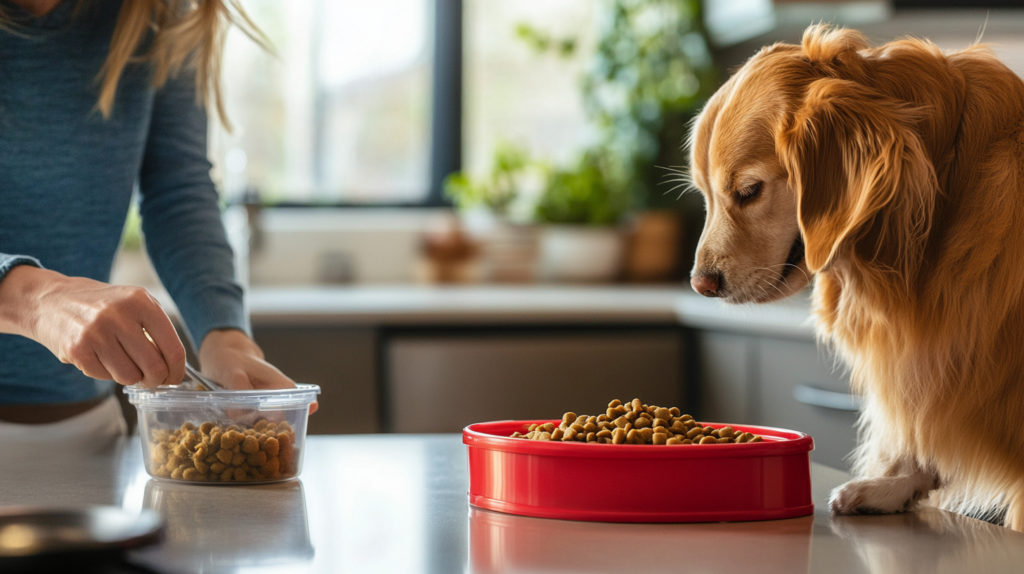
Certain situations require special considerations for proper portion control. Here’s how to handle common scenarios:
Multi-Pet Households
Managing portion control with multiple pets presents unique challenges:
- Food stealing between pets can lead to obesity
- Different pets have different nutritional needs
- Monitoring individual intake becomes more difficult
Solutions:
- Feed pets in separate rooms or using baby gates
- Consider microchip-activated feeding bowls for cats
- Supervise all feeding times
- Implement “station training” where each pet eats in a designated area
Treating Without Overfeeding
Treats are an important part of training and bonding, but can easily sabotage portion control efforts:
The 10% Rule
- Treats should constitute no more than 10% of daily caloric intake
- Deduct treat calories from daily food portions
- A 50-pound dog on a 1,000-calorie diet should receive no more than 100 calories from treats
Healthy Low-Calorie Alternatives
- Small pieces of carrot (about 3 calories each)
- Green beans (about 2 calories per bean)
- Single piece of kibble (about 4 calories)
- Commercial dental treats (typically 30-50 calories each)
Treat Tracking System
- Predetermine daily treat allowance
- Place allotted treats in a container each morning
- When the container is empty, no more treats until the next day
- Share this system with all family members
Managing Dietary Transitions
Changing foods requires careful portion control adjustments:
New Food Introduction Protocol
- Calculate appropriate portions for new food based on calorie content
- Transition gradually over 7-10 days:
- Days 1-3: 75% old food, 25% new food
- Days 4-6: 50% old food, 50% new food
- Days 7-9: 25% old food, 75% new food
- Day 10: 100% new food
- Monitor weight weekly during transition
- Adjust portions if weight changes occur
Advanced Portion Control Strategies
For pet parents looking to take their portion control practices to the next level, consider these advanced strategies:
Food Puzzle Toys and Slow Feeders
These tools serve multiple purposes:
- Slow down eating pace (reducing risk of bloat)
- Provide mental stimulation
- Extend meal satisfaction
- Increase activity level during feeding
Popular options include:
- Puzzle feeders that require problem-solving to access food
- Slow-feed bowls with ridges or obstacles
- Treat-dispensing toys that release food gradually
- Snuffle mats that hide kibble among fabric strips
Portion-Controlled Feeding Technology
Modern technology offers solutions for precise portion control:
- Automatic portion-controlled feeders with timers
- Smart feeders that connect to phone apps
- Microchip-activated feeders that prevent food stealing
- Gravity feeders with portion control inserts
Homemade and Raw Feeding Portion Control
For pet parents who prepare homemade diets or feed raw:
- Work with a veterinary nutritionist to create balanced recipes
- Calculate portions based on caloric density of ingredients
- Weigh ingredients rather than using volume measurements
- Prepare and freeze pre-portioned meals
The Role of Exercise in Portion Management
Exercise works hand-in-hand with proper portion control:
Exercise Requirements by Size
Small Pets (Under 20 lbs)
- Minimum 30 minutes daily activity
- Focus on short, frequent play sessions
- Indoor games and puzzle toys can supplement outdoor exercise
Medium-Sized Pets (20-60 lbs)
- Minimum 30-60 minutes daily activity
- Mix of walks and active play
- Consider dog sports like agility or flyball
Large and Giant Breeds (Over 60 lbs)
- Minimum 60+ minutes daily activity
- Low-impact exercise for giant breeds
- Swimming is excellent for joint health
Adjusting Portions Based on Activity Level
For very active days:
- Increase portions by 10-15% for extraordinary exercise days
- Return to normal portions the following day
- Focus on protein-rich additions rather than simply adding more kibble
For inactive days:
- Decrease portions by 10% during periods of significantly reduced activity
- Use low-calorie treats if extra rewards are needed
- Implement mental stimulation to compensate for physical activity
Monitoring and Adjusting Your Pet Portion Control Plan
Regular assessment is essential to successful portion control:
Effective Monitoring Tools
Weight Tracking
- Weigh pets at least monthly (more often for weight management programs)
- Use the same scale for consistency
- Record weights in a dedicated log or app
Body Condition Scoring Veterinarians recommend using a 9-point body condition scoring system:
- Score 1-3: Underweight
- Score 4-5: Ideal weight
- Score 6-9: Overweight
- Assess your pet’s score every 2-4 weeks
Measurement Tracking
- Measure neck, chest, and waist circumference monthly
- Use a fabric measuring tape for consistency
- Record measurements alongside weight data
When to Adjust Portions
Indicators That Portions Need Decreasing:
- Weight gain of more than 2% in a month
- Increasing body condition score
- Difficulty feeling ribs
- Decreasing activity level
- Loss of visible waistline
Indicators That Portions Need Increasing:
- Weight loss of more than 2% in a month (unless on veterinarian-supervised weight loss plan)
- Decreasing body condition score below ideal
- Ribs, spine, or hip bones becoming prominently visible
- Increased begging behavior or food aggression
- Lethargy or low energy levels
Working With Your Veterinarian
Professional guidance is invaluable for optimal portion control:
- Schedule wellness exams every 6-12 months
- Bring your feeding records to appointments
- Discuss any portion control challenges
- Ask for specific calorie recommendations
- Consider referral to a veterinary nutritionist for complex cases
Looking for expert guidance on pet food and nutrition? Visit BlithePet.com for more professional advice and product recommendations tailored to your pet’s specific needs.
Common Portion Control Challenges and Solutions
Even with the best intentions, pet parents often face obstacles to proper portion control:
Managing Begging Behavior
Persistent begging can undermine portion control efforts:
Understanding the Behavior
- Begging is often learned behavior, not true hunger
- Pets quickly associate certain triggers (packaging sounds, dinner time) with food
- Attention-seeking can masquerade as hunger
Effective Solutions:
- Feed pets before human meals
- Provide alternative activities during human mealtimes
- Use food puzzles to extend meal satisfaction
- Practice “place” training during mealtimes
- Never feed from the table
Portion Control During Boarding and Pet Sitting
Maintaining portion control when you’re away requires planning:
Boarding Facilities
- Provide pre-measured food in individual containers
- Include detailed feeding instructions
- Request feeding time that matches home schedule
- Ask about treat policies and provide alternatives if needed
Pet Sitters
- Create a detailed feeding schedule with photos
- Use clearly marked measuring cups
- Pre-portion meals when possible
- Address common problems in your instructions
Seasonal Adjustments
Many pets require portion adjustments based on seasonal changes:
Winter Considerations
- Decrease portions by 5-10% for less active winter months
- Monitor body condition more frequently
- Consider indoor enrichment activities to maintain energy expenditure
Summer Considerations
- Adjust feeding times to cooler parts of the day
- Increase water availability
- Monitor for increased activity levels that might require portion increases
Nutritional Density vs. Volume: Finding the Right Balance
Not all pet foods are created equal, and portion size alone doesn’t tell the full story:
Caloric Density Variations
Pet foods vary dramatically in caloric density:
- Dry kibble: 300-600 calories per cup
- Wet/canned food: 150-400 calories per can
- Raw/fresh diets: 25-50 calories per ounce
This means a “cup” of one food may contain twice the calories of another.
Making Smart Food Choices
When selecting pet food with portion control in mind:
- Higher protein foods typically support better weight management
- Fiber content increases satiety without adding calories
- Water content (wet foods) increases volume while limiting calories
- Avoid foods with excessive fat content for overweight pets
Reading Pet Food Labels Effectively
Understanding pet food labels improves portion control:
- Check “calories per cup” or “calories per can” (not just serving size)
- Review feeding guidelines as a starting point only
- Understand that “metabolizable energy” is the most accurate calorie measurement
- Check for feeding ranges based on weight and activity level
Psychological Aspects of Pet Portion Control
The human-animal bond can sometimes complicate portion control efforts:
Food as Love
Many pet parents express affection through food:
- Recognize when you’re feeding for emotional reasons rather than nutritional needs
- Find alternative ways to express affection (extra playtime, grooming, training)
- Practice mindful treating (asking if your pet truly needs or wants the treat)
Creating Healthy Food Relationships
Building a positive food experience without overfeeding:
- Use meal times for training and bonding
- Celebrate with play instead of extra food
- Find low-calorie treats that still feel special
- Share the importance of appropriate portions with all family members
FAQ: Common Pet Portion Control Questions
How do I know if my pet is at a healthy weight?
You should be able to feel your pet’s ribs with a gentle press but not see them prominently. When viewed from above, your pet should have a visible waist behind the ribs. From the side, the abdomen should tuck up from the ribcage to the hindquarters. If you’re unsure, your veterinarian can provide an objective assessment using a body condition scoring system.
Should I follow the feeding guidelines on the pet food package?
Feeding guidelines on pet food packages provide a helpful starting point, but they’re often generalized recommendations. These guidelines typically offer ranges based on weight but don’t account for individual factors like activity level, metabolism, or neutering status. Use them as an initial guide, then adjust based on your pet’s body condition and weight changes.
How do I measure wet food portions accurately?
For wet food, use a kitchen scale for greatest accuracy. Alternatively, you can use standardized measuring cups, remembering that most canned foods list both the can size (ounces/grams) and calorie content per can. Calculate the appropriate portion by dividing the total calories your pet needs by the calories per can or ounce of food.
How do I transition my pet from free-feeding to scheduled portions?
Start by determining your pet’s total daily caloric needs and divide that into appropriate meals. Begin offering measured portions at specific times, removing uneaten food after 15-20 minutes. Expect an adjustment period of 1-2 weeks with possible increased begging behavior. Remain consistent and provide appropriate environmental enrichment to help with the transition.
Can I mix dry and wet food? How do I calculate portions?
Yes, you can mix dry and wet food. To calculate portions, determine your pet’s total daily caloric needs, then decide what percentage of those calories will come from each food type. For example, if your cat needs 250 calories daily and you want to feed 75% dry and 25% wet food, provide approximately 188 calories of dry food and 62 calories of wet food. Always check the calorie content of each specific food product for accuracy.
How do I handle household members who overfeed our pet?
Clear communication is essential. Create a feeding chart that everyone can follow and update, showing daily portion allowances and feeding times. Pre-measure daily portions in separate containers when possible. Educate family members about the health risks of overfeeding and establish a “treats budget” that everyone understands. For persistent problems, consider using automatic portion-controlled feeders.
Looking for expert guidance on pet food and nutrition? Visit BlithePet.com for more professional advice and product recommendations tailored to your pet’s specific needs.
Conclusion:
The Lifelong Approach to Pet Portion Control
Proper pet portion control is not just about following a formula—it’s about developing a responsive, individualized approach to your pet’s nutritional needs throughout their life. By implementing the size-specific strategies outlined in this guide, you can help your pet maintain an ideal weight and enjoy better health outcomes.
Remember that portion control is a dynamic process that requires ongoing assessment and adjustment. Your pet’s needs will change with age, activity level, health status, and even seasonal variations. The effort you invest in understanding and responding to these changing needs will pay dividends in your pet’s quality of life and longevity.
Most importantly, portion control doesn’t mean depriving your pet—it means loving them enough to provide the right amount of nutrition for their unique needs. By focusing on appropriate portions, you’re giving your pet one of the greatest gifts possible: the foundation for a longer, healthier, more comfortable life.
Have a similar experience with your pet? Share it in the comments below!

